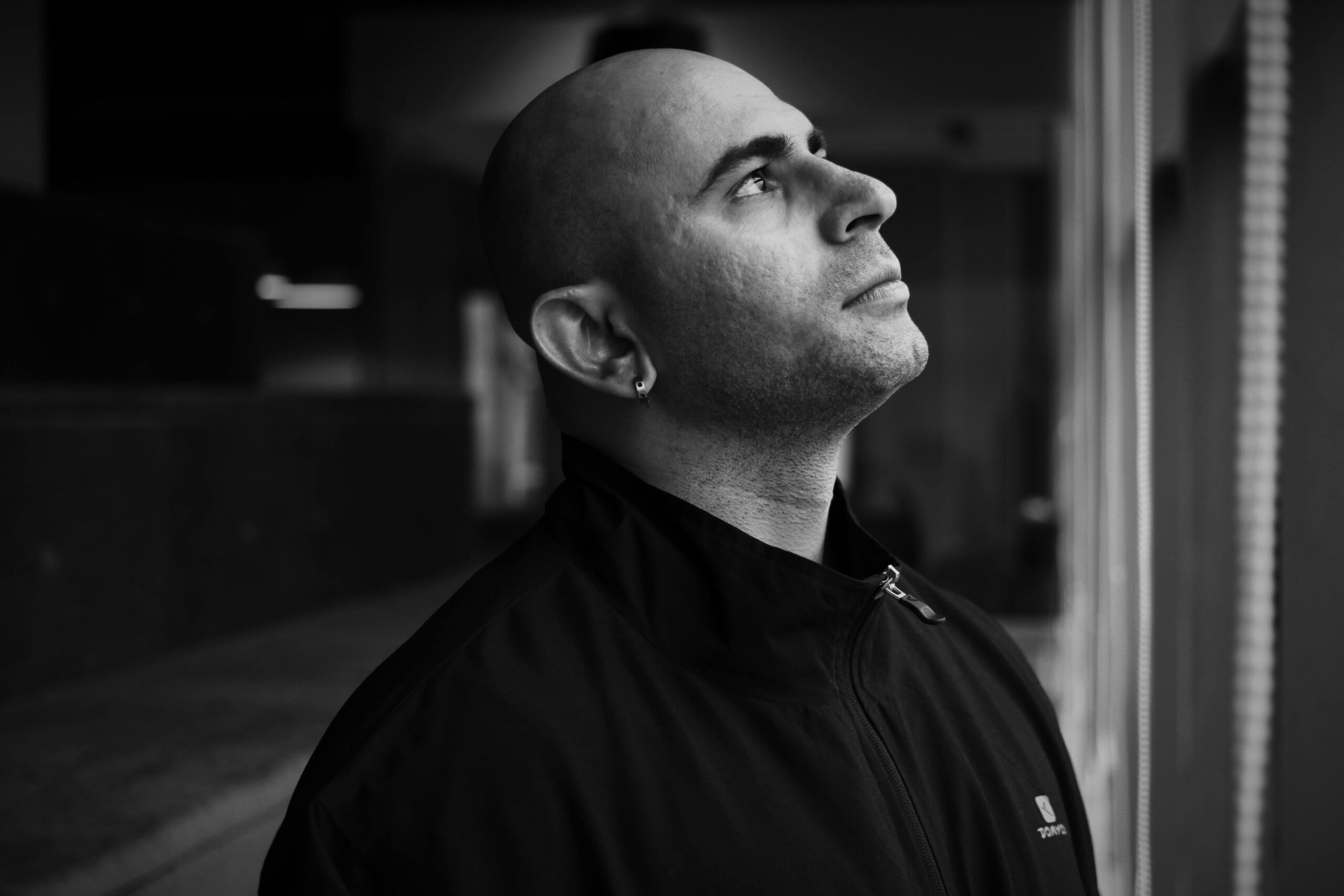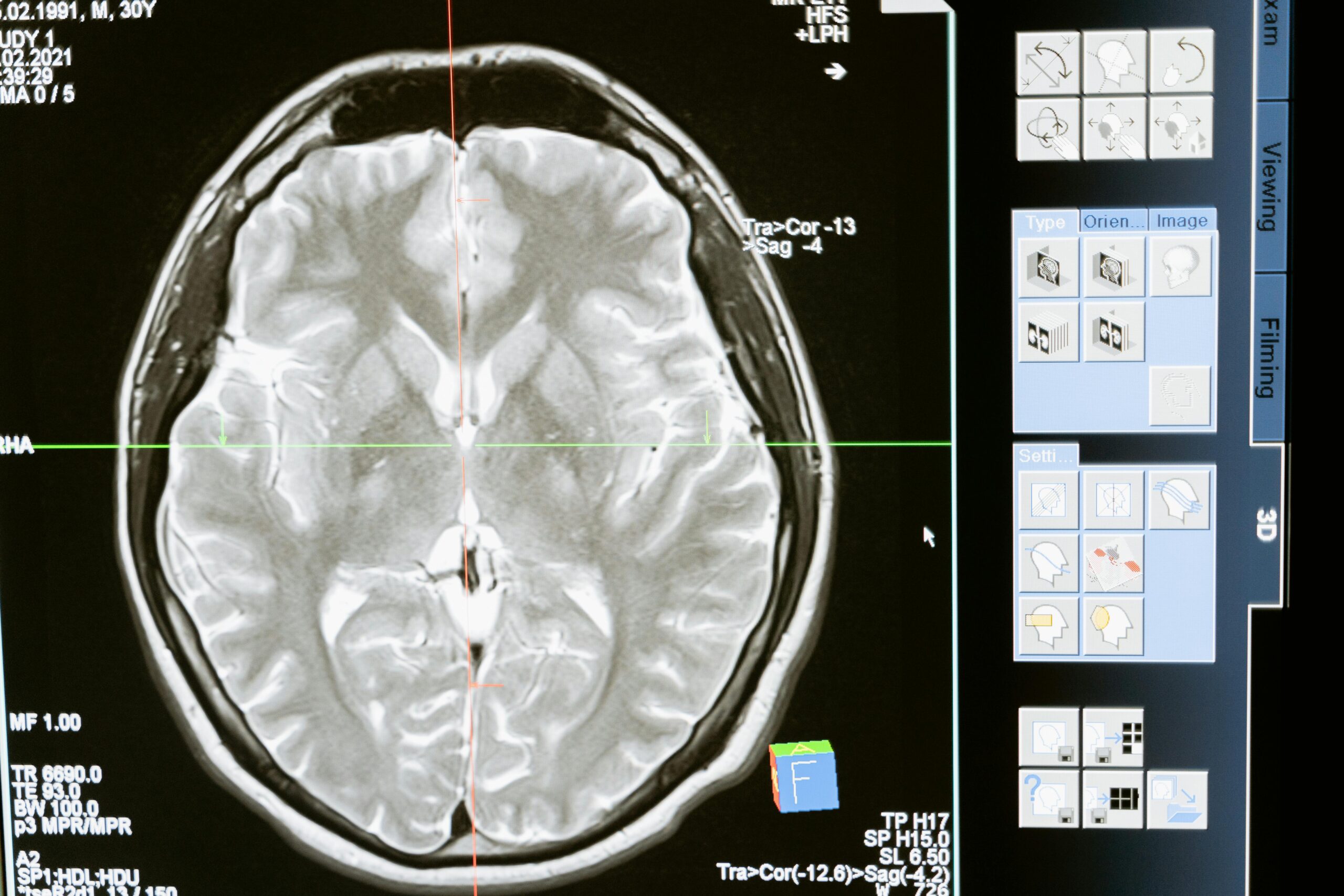
Will Trigeminal Neuralgia Go Away? Living with trigeminal neuralgia (TN) can feel like carrying a lightning bolt in your cheek—sudden, shocking, and life‑interrupting. If you’re reading this, you’re likely wondering the same question countless patients in Sarasota, Lakewood Ranch, and Bradenton ask us: Will trigeminal neuralgia go away?
The honest answer: Trigeminal neuralgia rarely goes away on its own. Pain medication, injections, and even surgical procedures may help dull or interrupt the pain signals for a time, but they don’t always address the root cause. At Lavender Family Chiropractic in Sarasota, Florida, we specialize in upper cervical chiropractic—a gentle, precise approach that focuses on the alignment of the top of your spine (the atlas and axis). In our clinical experience, upper cervical misalignment is the most commonly overlooked driver of trigeminal neuralgia, and when corrected with precise care, many patients finally get lasting relief.
This article explains why TN doesn’t typically resolve on its own, how the upper cervical region influences the trigeminal nerve, and what a clear, step‑by‑step plan to get your life back looks like—without popping, twisting, or cracking. If you’re searching “chiropractor Sarasota Florida,” “upper cervical chiropractor near me,” “chiropractor near me,” or even “Migraine doctor near me / Vertigo doctor near me,” you’re in the right place.
Will Trigeminal Neuralgia Go Away? What Is Trigeminal Neuralgia?
The trigeminal nerve (cranial nerve V) carries sensation from your face—cheeks, jaw, teeth, gums, and parts of the scalp—to your brain. When the nerve becomes irritated or compressed, it can misfire and create brief, intense, electric shock–like pain. Episodes may last seconds to a couple of minutes and can repeat many times a day. Some people experience aching or burning in between shock episodes, called atypical TN.
Common TN triggers include:
- Light touch (even a makeup brush or a breeze)
- Chewing, swallowing, or talking
- Smiling or laughing
- Brushing your teeth or shaving
- Cold air exposure
TN often follows a pattern of remissions and relapses. Pain can disappear for days or months only to return—sometimes more intensely—because the original irritant hasn’t been resolved.
Will Trigeminal Neuralgia Go Away on Its Own?
Short answer: rarely. While some patients enjoy temporary relief, true, long‑term resolution usually requires addressing the root cause. Medications like anticonvulsants (e.g., carbamazepine), muscle relaxants, or nerve blocks aim to calm symptoms, but they don’t correct underlying structural problems. Surgical procedures may attempt to cut, decompress, or deaden the nerve—sometimes with short‑term benefit but also with risks (numbness, recurrence, or side effects).
If a structural issue in the upper cervical spine is irritating the trigeminal system, symptoms tend to persist or return until the alignment is corrected and stabilized. That’s why, if you have TN today—or have had it in the past—it’s essential to get your upper cervical region assessed.
The Trigeminocervical Connection: Why Your Upper Neck Matters
The upper cervical spine—the atlas (C1) and axis (C2)—sits directly beneath your skull, surrounds the lower brainstem, and serves as a major neurologic crossroads. There’s a well‑described relationship between upper neck sensory pathways and the trigeminal system called the trigeminocervical nucleus. Put simply, sensory input from the top three cervical nerves and from the trigeminal nerve converges in the same region of the brainstem.
When the atlas or axis is misaligned—even by a small degree—it can:
- Alter mechanical tension on the brainstem and surrounding soft tissues.
- Disrupt cerebrospinal fluid (CSF) and blood flow dynamics near cranial nerves.
- Change postural muscle tone, jaw mechanics, and TMJ loading.
- Create aberrant sensory input into the trigeminocervical complex, priming the system for pain.
In our Sarasota practice, we routinely see that when this upper cervical misalignment is corrected and stabilized, trigeminal irritation diminishes—and with it, facial pain episodes.
“Most of the Time It’s the Neck”: A Common but Overlooked Pattern
People are often surprised to learn how frequently upper cervical misalignment shows up in trigeminal neuralgia cases. Many patients recall a history of head or neck trauma—even minor incidents like sports collisions, fender‑benders, falls, or whiplash—years before the first TN flare.
Here’s the clinical pattern we see again and again:
- Initial insult (whiplash, fall, dental extraction with prolonged mouth opening, bruxism, or years of forward‑head posture) subtly shifts the atlas/axis.
- The misalignment creates asymmetrical loading and altered mechanics through the cranio‑cervical junction.
- The brainstem and trigeminocervical complex receive irritating input, leading to heightened nerve sensitivity.
- Triggers that used to be harmless (breeze, brushing teeth) now provoke electric‑shock pain.
Correct the mechanics, reduce the irritation, and the nervous system often down‑regulates. That’s why upper cervical chiropractic is so powerful for TN—and why it deserves to be the first evaluation when TN symptoms appear.
Upper Cervical Chiropractic: Gentle, Precise, and Targeted
Upper cervical care is a subspecialty of chiropractic that zeroes in on the top of the spine. Unlike general methods that may adjust multiple levels with forceful twisting or popping, upper cervical techniques use mathematically precise, low‑force corrections to bring the atlas and axis back into alignment.
At Lavender Family Chiropractic, our approach combines three pillars:
1) 3D CBCT Imaging
We use 3D cone beam computed tomography (CBCT) to visualize the cranio‑cervical junction in exquisite detail—down to fractions of a millimeter. This allows us to locate exact misalignment patterns that traditional 2D X‑rays and basic exams often miss.
2) Functional Nervous System Scans (Tytron)
Using paraspinal infrared thermography (Tytron), we assess heat patterns along the spine that correlate with autonomic nerve irritation. These scans help us determine when you need an adjustment—and just as importantly, when you should not be adjusted (so your body can stabilize).
3) Gentle, Specific Adjustments
Our corrections are gentle and precise—no popping, twisting, or cracking. We use biomechanically informed vectors derived from your CBCT analysis to nudge the atlas/axis back into an efficient, neutral position, taking pressure off the trigeminocervical complex.
What to Expect at Lavender Family Chiropractic (Sarasota)
Step 1: Conversation & History
We listen. When did the pain start? Which side? What triggers it? Any prior whiplash, concussions, dental procedures, or jaw clenching? What helps (if anything)?
Step 2: Neuro‑Orthopedic Exam
We check cranial nerve function, jaw motion, cervical range of motion, posture, balance, and neurologic reflexes.
Step 3: CBCT & Tytron
We gather precise imaging and functional data to understand your unique alignment pattern and neurologic status.
Step 4: Personalized Report of Findings
You’ll see exactly what’s going on in your upper cervical spine and how it relates to your TN symptoms. We outline a plan—frequency, reassessments, and expected milestones.
Step 5: Your First Upper Cervical Correction
A gentle, specific adjustment to the atlas/axis—tailored to your measurements—aimed at relieving irritation to the brainstem and trigeminal pathways.
Step 6: Stabilization & Progress Tracking
We track changes in pain, triggers, chewing tolerance, dental hygiene activities, cold‑air sensitivity, and Tytron scans. As alignment holds longer, visit frequency tapers.
Timelines: How Soon Will I Feel Better?
Healing timelines vary. Some patients feel relief immediately after their first correction; others progress steadily over weeks to months as stabilizing muscles relearn healthy patterns and neurologic sensitivity settles down. We think in phases:
- Phase 1 – Relief: Reduce frequency and intensity of shock‑like pain, improve chewing and oral hygiene tolerance, expand trigger buffer.
- Phase 2 – Correction: Hold the alignment longer, continue desensitizing neural pathways, reduce inflammation.
- Phase 3 – Stabilization: Space out visits as your alignment and function hold; reinforce with posture, ergonomics, and jaw‑care strategies.
- Phase 4 – Resilience: Maintain with periodic check‑ins—especially after travel, dental work, new workouts, or minor accidents.
We’re transparent: flare‑ups can happen during healing (e.g., after dental visits, colds, poor sleep, or stress). These are opportunities to reassess and fine‑tune—not signs you’re “failing.”
Self‑Care While You Heal (Practical Tips)
- Jaw Hygiene: Use a soft‑bristle brush and warm water; try an electric toothbrush with low setting. Consider floss picks to minimize jaw opening.
- Chewing Strategy: Choose softer foods during flares; cut food smaller; avoid extreme opening (giant burgers, big bites).
- Thermal Triggers: Use a scarf or mask in cold air; avoid direct AC vents on the face while driving.
- Sleep & Pillows: Neutral neck support (not too high, not too flat). Back sleeping with a small cervical contour pillow often helps.
- Stress Modulation: Breathwork (4‑7‑8), brief walks, and gentle mobility decrease sympathetic drive that can amplify pain.
- Hydration & Nutrition: Aim for steady hydration; emphasize anti‑inflammatory foods (leafy greens, berries, omega‑3 rich fish).
- Dental Collaboration: Tell your dentist/hygienist about TN; request shorter sessions, breaks, and supportive head/neck positioning. We’re happy to coordinate care.
These are supportive tools—not replacements for correcting the structural driver.
Medications and Procedures: Where They Fit
We respect every patient’s journey. For some, medications or procedures provide necessary relief while the body heals. Our stance:
- Medications can quiet firing thresholds but do not correct mechanical misalignment.
- Injections/Blocks can interrupt pain cycles but may need repeating and can mask helpful feedback.
- Surgeries (e.g., microvascular decompression, rhizotomy, gamma knife) may help selected cases but carry risks and potential recurrence.
Upper cervical chiropractic pairs well with medical care because we target the mechanical source of irritation while your medical team supports symptom control. Many patients find they can reduce medication use over time under their prescribing doctor’s guidance as their alignment stabilizes.
Why Choose Lavender Family Chiropractic in Sarasota
- Advanced Imaging: 3D CBCT for sub‑millimeter clarity of the cranio‑cervical junction.
- Objective Scans: Tytron paraspinal infrared thermography to monitor autonomic changes and guide timing of care.
- Gentle, Precise Corrections: No twisting, popping, or cracking—ideal for sensitive TN patients.
- Experience With Complex Cases: Trigeminal neuralgia, migraines, vestibular migraine, vertigo, TMJ, and post‑concussion cases.
- Local, Convenient Care: Serving Sarasota, Bradenton, Lakewood Ranch, Parrish, Ellenton, Venice, Osprey, Punta Gorda, St. Petersburg, Siesta Key, Longboat Key, Lido Key, and Myakka City.
- Proven Systems: Clear onboarding, measurable milestones, and communication with your other providers when needed.
If you’re searching “upper cervical chiropractor near me” or “chiropractor near me” and you’re anywhere in the Greater Sarasota/Manatee area, our team—Dr. Rusty Lavender, Dr. Jacob Temple, and Dr. Will Guzinski—is ready to help.
Patient Stories of Hope
Mary (Sarasota): “I dreaded brushing my teeth. The tiniest touch sent lightning through my jaw. After CBCT showed an atlas misalignment, Dr. Lavender used a gentle correction. Within two weeks I could brush and eat soup without bracing myself. Two months later, I only had one mild flare during a stressful week.”
Tom (Bradenton): “I had two root canals for pain that turned out not to be dental. The scans at Lavender Family Chiropractic finally gave me answers. My corrections are so gentle I barely feel them—and my face pain went from daily to rare.”
Linda (Lakewood Ranch): “Medication helped, but I felt foggy and tired. After upper cervical care, I worked with my doctor to lower my dose. I’m myself again—and I’m not afraid of a breeze anymore.”
Ana (Venice): “I noticed my head tilt in photos for years. I never connected it with my facial pain until the doctors explained the trigeminocervical link. Holding my alignment has been the key.”
Who Is a Good Candidate?
- You experience electric‑shock facial pain with known triggers.
- You have a history of neck injuries, whiplash, concussions, or jaw clenching.
- You’ve tried medications/injections with partial or temporary relief.
- Cold air, brushing, chewing, or talking set off pain.
- You prefer a drug‑free, gentle approach that aims for long‑term stability.
Red‑flag symptoms (e.g., sudden facial paralysis, vision loss, unexplained weight loss, fever, new severe neurologic deficits) warrant immediate medical evaluation. We coordinate care and refer when appropriate.
How Many Visits Will I Need?
Care plans are individualized. Early on, visits may be more frequent to help your body establish and hold the new alignment. As you stabilize, we extend the spacing. Our goal is always fewer adjustments, held longer. We teach you how to protect your correction with posture tips, sleep strategies, and smart ergonomics.
The Cost of Not Addressing the Root Cause
Every flare takes a toll—on work, family, and mental energy. Without correcting the mechanical driver, people often bounce between short‑term fixes and escalating interventions. Investing in precision diagnosis and alignment now can save time, money, and quality of life later.
Insurance & Payment Options
Our office is out of network with insurance. Many of our patients receive a superbill to submit to their insurance for reimbursement based on their coverage. We offer many different payment options as well as finance options. If you have questions, our front desk can walk you through next steps so you can focus on healing.
Our Promise to You
We take your pain seriously—and personally. You’ll get a clear plan, careful communication, and no high‑pressure tactics. If we don’t believe upper cervical care is right for you, we’ll say so and refer you to the appropriate provider. If it is right for you, we’ll walk with you every step of the way.
Top 15 FAQs: Trigeminal Neuralgia & Upper Cervical Chiropractic
1) Will trigeminal neuralgia go away on its own?
TN rarely resolves completely without addressing the underlying cause. In our clinical experience, upper cervical misalignment is the most common and overlooked driver, so it’s crucial to get your atlas/axis evaluated.
2) How can the neck cause facial pain?
The trigeminal and upper cervical sensory pathways converge in the brainstem (trigeminocervical nucleus). Misalignment can irritate this area and sensitize the trigeminal system.
3) What makes upper cervical chiropractic different?
We use 3D CBCT to detect minute misalignments and Tytron thermography to guide timing. Adjustments are gentle and specific—no popping, twisting, or cracking.
4) How soon will I notice improvement?
Some feel better after the first correction; others build steadily over weeks to months as alignment holds and neural sensitivity calms.
5) Can I keep taking my medication?
Yes. Continue all medications as prescribed. As you improve, your prescribing provider may adjust dosages. Our role is to correct the mechanical driver while your medical team supports symptoms.
6) Will I need lifelong care?
You won’t need constant care. Once stabilized, most patients maintain results with periodic check‑ins—similar to dental cleanings for spine and nervous system health.
7) Is upper cervical care safe?
Yes. The techniques we use are low‑force and precise, ideal for sensitive TN.
8) Do you treat TMJ, migraines, or vertigo too?
Yes. Many TN patients also have TMJ, migraines, or vestibular symptoms. Because the same neuroanatomy is involved, improvements often occur together. (People often find us by searching “Vertigo doctor near me” or “Migraine doctor near me.”)
9) What if my dentist says my teeth are fine?
That’s common in TN. We collaborate with dentists; when dental causes are ruled out, upper cervical misalignment is a logical next step.
10) I’ve had surgery. Can you still help?
Often, yes. Surgery may change pain pathways but doesn’t necessarily address upper cervical mechanics. We evaluate you individually.
11) Do I need a referral?
No referral is needed. Call us directly to schedule.
12) Will adjustments hurt?
No. Most people are surprised by how gentle the corrections feel.
13) Can stress make TN worse?
Yes. Stress elevates sympathetic tone and can lower pain thresholds. That’s why we pair structural correction with simple stress‑modulating habits.
14) Do you accept children or seniors?
We care for all ages. Techniques are adapted for each body and health history.
15) What are your service areas?
We proudly serve Sarasota, Bradenton, Lakewood Ranch, Parrish, Ellenton, Venice, Osprey, Punta Gorda, St. Petersburg, Siesta Key, Longboat Key, Lido Key, and Myakka City—and welcome patients who travel to us for specialized care.
Why Today Is the Best Day to Start
Waiting for TN to “go away” risks more cycles of relapse and more missed moments. Every day you live with facial pain is a day your nervous system entrenches that pattern. The earlier we identify and correct an upper cervical misalignment, the sooner your healing can begin—and the stronger your long‑term results.
If you’ve been searching online for “chiropractor Sarasota Florida,” “upper cervical chiropractic,” “upper cervical chiropractor near me,” or “chiropractor near me,” consider this your sign to take the next step.
Call or Click—We’re Ready When You Are
Lavender Family Chiropractic in Sarasota Florida offers complimentary consultations to learn more about you. Click the link below!
https://intake.chirohd.com/new-patient-scheduling/724/lavender-family-chiropractic
Visit our Website!
To learn more about us go to http://www.chiropractorsarasotaflorida.com
We also service Bradenton, Parrish, Ellenton, Ruskin, Venice, Tampa, St. Pete, Osprey, Longboat, Lakewood Ranch, Myakka City.
If you are in Tampa, Fort Myers, or Salt Lake City, you can visit my other locations! NeckWise Upper Cervical. Visit, www.neckwise.com
If you are not local, visit www.uccnearme.com to find a doctor in your area.
Serving Sarasota, Bradenton, Lakewood Ranch, Parrish, Ellenton, Venice, Osprey, Punta Gorda, St. Petersburg, Siesta Key, Longboat Key, Lido Key, Myakka City and beyond.
📸 Instagram: @lavenderfamilysrq
🎥 TikTok: @drrustylavender
Your path back to a calm, confident, pain‑free life starts with a precise look at your upper neck. Schedule your consultation today.
Final Takeaway
Will trigeminal neuralgia go away? Not by itself—not usually. But with a meticulous, upper cervical chiropractic approach that restores alignment, reduces brainstem irritation, and calms the trigeminal system, lasting relief is not just possible—it’s common. At Lavender Family Chiropractic, we pair advanced imaging with gentle precision so your nervous system can finally do what it was designed to do: heal.





